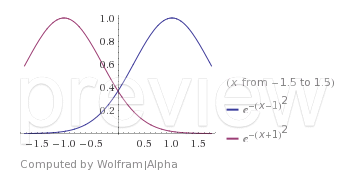Let $\{Z(t)\}_{t\geq 0}$ be a strongly continuous positive semigroup on a Banach lattice $V$ (endowed with ordering $\leq$). Let $\phi:V\rightarrow V$ be a convex operator. I want to prove that $$\phi(Z(t)f)\leq Z(t)(\phi f),\quad f\in V,\quad t>0.$$ Can someone out there help me out?
-
1$\begingroup$ If we use the same definitions, then a linear operator is a special case of a convex one and then I believe your statement does not hold without further conditions. What I have in mind is in $C_0(\mathbb{R})$ taking the left shift group and as $\phi$ taking mirroring along the $y$-axis. Then the two sides are not always comparable if I am not mistaken. $\endgroup$– András BátkaiCommented Dec 27, 2013 at 23:33
-
$\begingroup$ They are definitely not equal... $\endgroup$– András BátkaiCommented Jan 2, 2014 at 21:50
-
$\begingroup$ For the historical record, the user who asked this question formerly used the name "Gul E Hina". $\endgroup$– Kim MorrisonCommented Apr 23, 2014 at 0:16
1 Answer
OK, I write my comment into an answer. A linear operator is a special case of a convex one and then I believe your statement does not hold without further conditions.
What I have in mind is in $X:=C_0(\mathbb{R})$ taking the left shift group as $Z(t)$ and as $\phi$ taking mirroring along the y-axis, i.e., $\phi f(s)=f(-s)$.
If you take now a bell-shaped curve like $f(s)=e^{-s^2}$, then $f$ is positive, $\phi f = f$, and $Z(t)(\phi f)$ has maximum at $s=-t$, and it is between 0 and 1 elsewhere.
On the other hand, $\phi(Z(t)f)$ has a maximum at $s=t$ and it is immediate that we cannot compare the two functions in the usual ordering.
Wolfram Alpha gives me these images.

ADDED 01/05/2014:
You can easily modify this example to the following: Let $\Gamma\subset\mathbb{C}$ be the unit circle, $Z(t)$ the usual rotation group and $\phi$ mirroring to the $x$-axis ($\phi(e^{is}) = e^{-is}$). Taking a nonconstant continuous function $f$ on the circle you can draw the same conclusions. Then you have an example in a $C(K)$ space such that $Z(t)1 = 1$.
ADDED 01/07/2014:
Let $f(z)=\Re z+1\geq 0$, then $(Z(t)f)(e^{is}) = f(e^{i(t+s)}) = \cos(t+s)+1$, hence $\phi(Z(t)f)(e^{is}) = \cos(t-s)+1$.
On the other hand, $\phi(f)=f$, and $Z(t)(\phi f)(e^{is}) = (Z(t)f)(e^{is})=\cos(t+s)+1$. Hence, they are not comparable and you can produce a similar picture as above to demonstrate this.
-
$\begingroup$ Sir, for $X=C(\Gamma)$ (continuous functions on unit circle), rotation group is defined as $$(T(t)f)(s)=f(e^{it}.z),\quad f\in X, z\in\Gamma$$ Let $\phi$ be mirroring along $x$-axis (which means to take conjugate) i.e $\phi(z)=\overline{z},\quad z\in\Gamma.$ If I take $f(z)=z^2$, for $z\in\Gamma$, then f is continuous. $(T(t)f)(z)=f(e^{it}.z)=z^2e^{2it}$, $\phi[(T(t)f)(z)]=\overline{z}^2e^{-2it}$, $\phi(f(z))=\overline{z}^2$, $T(t)[\phi(f(z))]=\overline{e^{it}.z}^2=\overline{z}^2.e^{-2it}$ Sir this is how I tried. It may be wrong. $\endgroup$ Commented Jan 6, 2014 at 9:17
-
$\begingroup$ I deleted my comments and added a detailed example. You should consider real valued functions if you want to preserve positivity. Good day to you. $\endgroup$ Commented Jan 7, 2014 at 20:38
-
$\begingroup$ Why do you think so? You mix up something again... $\endgroup$ Commented Jan 15, 2014 at 7:03
-
$\begingroup$ $1$ is the constant one function, not $Z$.... $\endgroup$ Commented Jan 15, 2014 at 8:42
-
$\begingroup$ $Zv\neq v$. The linear polynomial is never considered to be an identity element in these spaces, only if you make an algebra by composition. $\endgroup$ Commented Jan 15, 2014 at 8:55
